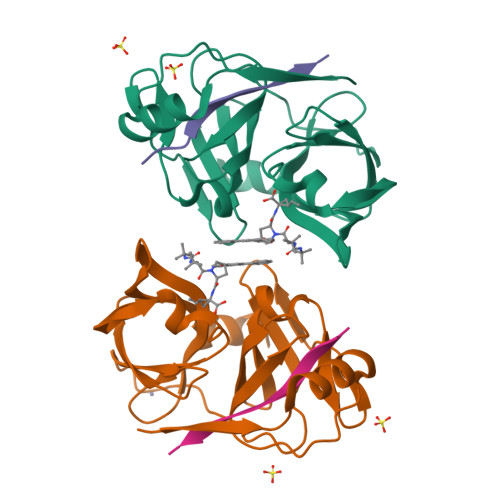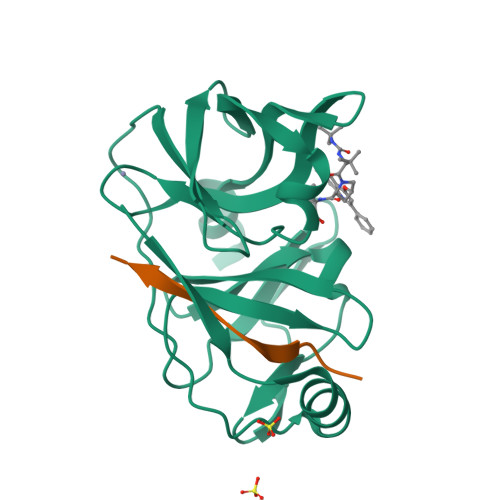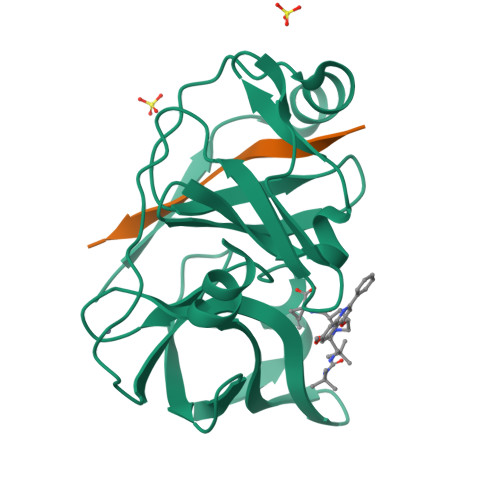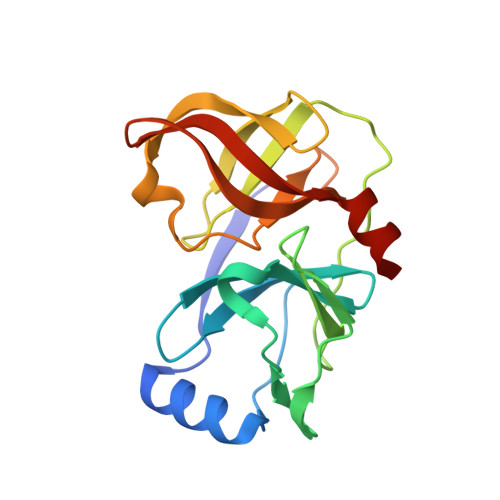Ligand bioactive conformation plays a critical role in the design of drugs that target the hepatitis C virus NS3 protease.
Laplante, S.R., Nar, H., Lemke, C.T., Jakalian, A., Aubry, N., Kawai, S.H.(2014) J Med Chem 57: 1777-1789
- PubMed: 24144444
- DOI: https://doi.org/10.1021/jm401338c
- Primary Citation of Related Structures:
4K8B - PubMed Abstract:
A ligand-focused strategy employed NMR, X-ray, modeling, and medicinal chemistry to expose the critical role that bioactive conformation played in the design of a variety of drugs that target the HCV protease. The bioactive conformation (bound states) were determined for key inhibitors identified along our drug discovery pathway from the hit to clinical compounds. All adopt similar bioactive conformations for the common core derived from the hit peptide DDIVPC. A carefully designed SAR analysis, based on the advanced inhibitor 1 in which the P1 to P3 side chains and the N-terminal Boc were sequentially truncated, revealed a correlation between affinity and the relative predominance of the bioactive conformation in the free state. Interestingly, synergistic conformation effects on potency were also noted. Comparisons with clinical and recently marketed drugs from the pharmaceutical industry showed that all have the same core and similar bioactive conformations. This suggested that the variety of appendages discovered for these compounds also properly satisfy the bioactive conformation requirements and allowed for a large variety of HCV protease drug candidates to be designed.
Organizational Affiliation:
Department of Chemistry, Boehringer-Ingelheim (Canada) Ltd., Research and Development , Laval, Québec H7S 2G5, Canada.























